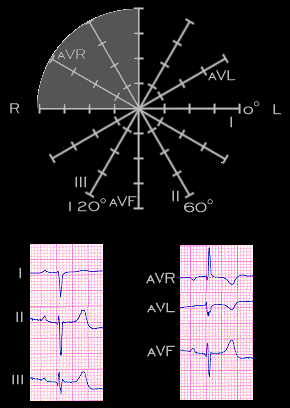
When the main QRS electrical axis is in the right upper quadrant, i.e. between +180 and -90 degrees (it is +210 degrees in this example), it is referred to as either "marked right axis deviation" or as "abnormal superior axis". The designation of left or right axis deviation is important in the diagnosis of some intraventricular conduction disturbances and in the diagnosis of ventricular hypertrophy.
